The year is done. It brought many things: a new wave of hipster metal that blipped and died, an old school revival that’s been percolating for years, drama and sadness with the recent death of Rigor Mortis’ Mike Scaccia. Above all else, however, it brought us some quality music, some of which is heavy metal and some of which is metal in spirit only. Enjoy this survey of the best of 2012.
The Best Metal (and related) of 2012
- Abhorrence – Completely Vulgar This legendary band existed before Amorphis and plays a grittier style of the bold, warlike and heavy yet melodic music that graced Amorphis’ first album, The Karelian Isthmus. These Abhorrence tracks show the band that would later write that album as they emerge from early grind/death stylings and gradually work more melody into their work. This is metal’s holy grail: how to be both epic and amoral in the nihilistic sense of worshipping power, darkness and nature, but also use melody and harmony to give the works some staying power. As this collection of re-released demos progresses, the fusion of the two gets more confident and deft, leading us up to the point where the greatness of the first Amorphis album was inevitable.
- Angel Witch – As Above, So Below After a lengthy absence, this classic NWOBHM band returns with an album that shows integration of more recent influences, specifically American heavy metal and progressive metal, but still keeps up the power. These songs are not as distinctive or as oddball as the heavily personalitied offerings from their self-titled album, but As Above, So Below is important because it takes disparate influences and places them under the control of one voice and style, which gives others room to build on. The oil-on-water aspect of bands switching between influences is gone and replaced by a smooth enwrapping of these styles into the substrate of Angel Witch’s lauded and learned evil heavy metal.
- Beherit – Celebrate the Dead If death metal was modernism, with its emphasis on structure, black metal was postmodernism, or an attempt to show through atmosphere the many facets of an idea in a clarity which could not be confined to a single statement. This was a quest as old as humanity, which is how to communicate in such a way that people who do not understand it do not simply imitate it from the outside-in and make something that looks about like it, fooling most people. Since the late 1990s Beherit have been at work inventing the next wave or movement of metal, one in which multiple statements co-exist in contradictory opposites that reveal the shadow or silhouette of an underlying truth. Two forms are in tension here: the “loop” form of traditional ambient music, in which layers are poured on top of a basic dub to create a simple sonic tapestry, and the pure narrative form which electro-acoustic music (and even some dubstep) touches on, in which a story is told through the change of riffs. This is closer to the original death metal idea of structure, but it is structure created through atmosphere, like old Tangerine Dream and Brian Eno albums, or even classical music. To this end, Beherit has re-released two demo songs from Engram which are ambitious longer (13- and 15-minute) works which show a deepening and changing of atmosphere, using both looping and narrative constructs at the same time. This is a valiant and clear-headed attempt to resurrect black metal, which has fallen into the hands of those who imitate the “external” aspects of the early classics like simple riffs and fast songs, but understand none of the underlying ideas or songwriting methods. While it seems unconventional at first, Celebrate the Dead is a return to the truest form of black metal by expanding its orthodoxy to include the transcendental narrative of those more experienced in both this world, and the realms beyond. Be not fooled — evil pervades this release, so subtly that you will not know until it has seized your soul.
- Dead Can Dance – Anastasis For their return after some absence, Dead Can Dance have taken the style on Spiritchaser and refined it even more with the sensibility of modern club music and soundtrack influences. Rhythms and tempo work like you might expect a big label ambient album to work, fitting very much into the slightly picked up chill-out range with gentle backing beats that are still identifiable enough to make it easy to listen to. Consistent with even earlier work, songs use extended structures, but they fit the pattern of an early MTV video or short film more than a musical one. The result is that these are immersive little sonic ventures that are both easy to hear and not surprising, and also, rewarding in their consistency and adept arrangements. Melodies themselves are not as adventurous or period/locale-specific as older Dead Can Dance, and in fact more lifts from earlier influences can be heard (check out the Doors “The end” inspirations on the first track). For a purist, this will not be the best Dead Can Dance album, but for something that has stepped into the Loreena McKennit or Enya range of “accessible,” this is far beyond what most would encounter otherwise and makes for a pleasant listen on its own.
- Demoncy – Enthroned is the Night Along with Beherit, this shares the top spot as album of the year. In 2012, a wave of bands like Cruciamentum and Heresiarch rediscovered the sound of classic Incantation from the Onward to Golgotha area. Having come from the same school, joined to Incantation by Ixithra’s former band Havohej’s primary composer, Paul Ledney, having been an original member of Incantation, Demoncy launched into the same by creating a faithful followup to 1996’s Joined in Darkness. In this case, Demoncy add a bit of melody and atmosphere, channeling from first album Unleashed and other Swedish death metal classics, thus combining the two most intense areas of death metal into what is really a death metal album with a black metal sense of atmosphere. The result is a descent into a dark and primal place in which occult spiritual warfare transpires through the battling of motifs in this complex album made of simple parts. Like Joined in Darkness, it is otherworldly and foreboding, but a bit less purely alienated; instead, this album creates a sense of symbolic significance emerging like melody from the clouded obscure. Very little black metal of this intensity has been made since the mid-1990s which makes this both faithful to the spirit and pushing the boundaries of the genre, a simultaneous advancement that eludes most musicians and fans alike.
- Derkéta – In Death We Meet Arising from the ashes of Mythic, the all-female doom-death band from the early 1990s, Derkéta follows in a more purely doom metal path including some of the juicy 1970s heavy metal style doom metal that audiences enjoy with bands like Pentagram and Witchfinder General. 24 years later, this album is the first for this promising band, and holds back nothing. Like Mythic, the music is formed of giant bolsters of tunneling power chords colliding slowly over a changing melodic landscape. Atmosphere emerges from within. The simplicity of it removes the glitz and contentless enhancement of current doom metal bands, and takes the listeners back to the essence of the genre, which is an unsettling sense of pervasive dread. A prominent Candlemass Ancient Dreams influence seems to be present in these compact and droning songs.
- Desecresy – The Doom Skeptron Desecresy approach Finnish death metal the way others might approach doom metal, using melody and abstract song structures to convey an experience not unlike watching the helmet camera of a pilot flying through a vast and ancient underground cave in which demons seem to lurk behind every stalagtite. Comparable to a hybrid between Amorphis and Skepticism, this album nonetheless keeps up the umptempo riffing and lets its melodies emerge to construct an emanating atmosphere. The result is both aggressive and enjoyable from a purely death metal perspective, but where appropriate, it uses the moods of doom metal to complete that raging insanity to produce an experience that is like a journey. There are doubts, fears, joys, rage and sadness, but pervading all of it is a sonorous melancholy which indicates a change in viewing life from orientation toward what is safe, to prizing what is adventurous and as such being alone on a planet of people concerned with safety labels and microwave cooking.
- Drawn and Quartered – Feeding Hell’s Furnace Imagine a hybrid between Angelcorpse and Num Skull. These songs are extremely basic, like the melodies of horror movies, but are put together with interlocking rhythms that propel them forward and give them atmosphere. As a result, their themes feel intuitive like paths through a forest remembered from a childhood story. There will not be surprise at the ways these tunes twist and bend, but appreciation for a well-done interpretation on a necessary idea. In the same way you might appreciate an excellent sword or well-executed painting of a familiar subject, these songs will be appreciated for how well they do what they love. Just as most musicians make their best work when they design it to be enjoyed repeatedly by people with their own tastes, this faithful and yet creative interpretation of the old school death metal genre will be shared among those who can appreciate it, for taking the past and making it live on by keeping it current to itself and through inventiveness, an enjoyable listen.
- Faustcoven – Hellfire and Funeral Bells This release is not particularly metal, or at least underground metal, even though it aspires to the aesthetics of it. Rather, this is like Marilyn Manson interpreting classic heavy metal in a gothic doom metal context as informed by death metal aesthetics but not technique. It’s basically blues rock with short phrase power chord riffs and highly compelling rhythm, underneath leads that are reminiscent of a friendlier version of St. Vitus. Good use of theme allows this release to be a faithful listen and also have some staying power for those who like this style. Like most doom metal, it is designed to build a repetitive atmosphere that is part curl of enjoyment, and part linear path of a melancholic mood. The death metal vocals would normally be out of place here but with the heavy reverb they take a backseat and let the guitars talk, which is the point of this band. It will probably not delight those who like underground metal, but if you’re looking for someplace to go for your next Cathedral or Sleep fix, this furry doom band holds the ticket.
- Grave – Endless Procession of SoulsGrave return to the Swedish style which they helped make famous. Like later Fleshcrawl, this music is simplified from the original riff-salad which was reverse-assembled to make a journey into darkness emerge from thin air, but although it uses plenty of verse-chorus segments, they are not the entirety of each song. There are enough labyrinthine twists and turns to be fun, a good motivational rhythm, and an atmosphere of darkness and aggressive that is also (oddly) comforting and natural. Although musically this is fairly basic, like early Grave, it shows more use of melody and harmony, which adds an appreciable dimension of compactness and centering without falling into standard rock music. The result is easy to listen to and yet brings out its power in moments of sudden clarity which, as in life, make the listener think there might be more afoot than the obvious.
- Imprecation – Jehovah Denied This four-song EP shows the resurrected Imprecation: more consistent in its songwriting, slightly less manic, and more inclined to create a pervasive atmosphere of darkness. The occult death metal founders from Houston originally shone in the early 1990s, when their demos and later CD were released, but returned after inaction and the lending of band members to other acts. Their earlier material had more of a Morbid Angel influence and presented itself as clear occultism, where the newer material goes back more toward where Possessed and early old school death metal (Morpheus Descends, Massacre) were headed back in their day. Mood-enhancing use of background keyboards gives an aura of the mysterious to these dark melodies and the organic rhythms which suffuse them. Influences on this music span from pre-death metal, through the walking and stalking rhythms of speed metal, to the later black metal works in song structure and atmosphere. This EP presages a killer full-length but stands on its own as quality music with a voice particular to its worldview.
- Incantation – Vanquish in Vengeance With new personnel and possibly the strongest sense of unity in a long time, Incantation very sensibly took influences deliberately from their own two greatest successes: Onward to Golgotha and Diabolical Conquest. The result is an album that self-consciously borrows from those albums in style but tries to create new songs to wrap in that style, and with the aid of new guitarist Alex Bouks (ex-Goreaphobia) shapes its works around melodic shapes but does not adorn them in melodic riffing, creating a sense of an inner region of hidden energy within the exterior of rugged chromatic shapes. The result is one of Incantation’s most conventional albums but also a festival of the methods that made early Incantation so distinctive and powerful, which combined makes for a good later death metal listen.
- Legion of Doom – The Summoning of Shadows This oddity of an album begins with some form of sung prayer and launches into songs that are both adorned in the harmonic glaze of melodic playing and also possessed of the manic simplicity of early black metal. Like the primitive era of black metal, these songs are specific structures fitting the content of each song, with droning riffs that interact and build to a culmination before dissipating. On this album, Legion of Doom use more death metal and speed metal technique in with their Burzum-inspired black metal, ending in a result that sounds more like an ornate and elegant version of Gorgoroth’s Destroyer. Like all Legion of Doom releases, The Summoning of Shadows features songs that accelerate thematic intensity in layers and produce an immerse, ambient experience that suspends reality through the sheer dominating power of its riffs. This album is more efficient than the last couple of releases of this band, and by embracing a listenable style, makes the type of outsider album that Marduk or Watain wish they could.
- Lord Wind – Ales Stenar If you want to immerse yourself in ancient sensation, Graveland axeman Rob Darken’s ambient/neofolk/soundtrack project Lord Wind is a good place to start. Unlike previous Lord Wind efforts, Ales Stenar mixes real vocals and violin with electronic music that is roughly inspired by the Conan and Red Sonja soundtracks. The goal however is less like the rock-ish folk songs of neofolk, or the grand accompaniment for cinema provided by soundtracks; this is music like Burzum or Graveland that is designed for the listener to lose themselves in its repetitive hypnotic surges, like a catechism or mantra. Its soaring melodies and plunging dynamics give it a familiarity like the rush of blood through veins in the ears, and the result feels natural and yet inspired to rise above the mundane at the same time. Like entering a forest, the songs open up to repeated listens and soon each part is distinct, but our natural way is to hear it all at once and derive a sentimental feeling, perhaps warlike, from it. This is the most proficient and perhaps most profound of the Lord Wind albums, proffering a complete escape from reality to a world that is both fantasy and more real than the stuporous dream of modernity.
- Master – The New Elite Over the past few albums, punk/heavy metal hybrid Master has steadily been migrating toward late-1990s death metal. This new album presents a more technical view than the verse-chorus-exposition songs that Master (and related Speckmann projects) evolved from. Much like On the Seventh Day God Created…Master, riffs are strummed with precision at high speed and tend to lead away from stable grouping by adding riffs to the existing loop. These riffs use longer progressions and more chromatic fills, giving the music a mechanical terror that makes it sound like technocracy taking over. Speckmann’s vocals are tighter than in the past and urge the music along, but somewhere in this musical process of evolution, his overall tone has started sounding less like protest music and more like a cheering of the coming conflagration. Seeing that Master keep improving over time provides a great incentive to follow this band as they evolve further.
- Profanatica – Sickened by Holy Host / The Grand Masters Sessions Sometimes, in order to reach your next aspiration, it is necessary to part with the past. Profanatica have done this in grand style by accumulating old tracks and re-working them in parallel, with one disc containing newer versions done in the early 1990s style, and the other containing older session takes on the same songs, interspersed with acoustic landscapes by Aragorn Amori, the band’s much-admired deceased former guitarist. Through its long history, the entity known as Profanatica/Havohej (or: Paul Ledney and friends) has consistently released material showcasing a truly artistic brilliance. Usually, between moments of brilliance there are experiments and less intense offerings that make it easy to forget that when they are in full swing, these musicians are unstoppable forces creating a unique type of black metal that is closer to ambient death metal but unlike most black metal at this time, possessed of a full mythos and unique view of the world. Like the best of Profanatica/Havohej, these two discs are ripping sonic terror that transcend daily life and divulge the essence of the feral spirit of pre-civilized humanity. In that vision of evil, Profanatica offer us something both inspiring and instructive, and do so through some of the best music of their career.
- Terrorizer – Hordes of Zombies People love change if it is constant and hate it if not. Terrorizer misstepped with their first post-World Downfall album, but came back with a strong contender on Hordes of Zombies. It does not attempt to be World Downfall II which is intelligent since outward-in emulation of the past usually produces hollow shells, and a good many classic bands have gone to their graves in disgrace by doing the same thing. Instead, this aims more at the territory scoped by Napalm Death with Fear, Emptiness, Despair: a modern form of grindcore that is musical and listenable without being commercial, and aims less at creating an atmosphere of terror and misery than creating motivational, energetic and yet literalist/realist music. These songs convey a desire to look at a dangerous situation with hopeless odds, then jump in and fight it out. It’s war music, but music of a normalized war, like going out into a declining civilization and fighting for mundane survival. Hordes of Zombies does this through a somewhat overused metal metaphor, that of the zombie takeover of society, but as a movie/musical trope this theme has remained consistent since the 1960s because it so aptly describes egalitarian society. Consumerism, mass trends, fads, panics, elections, Black Friday sales, save-the-children; it’s all in there. Terrorizer may be brilliant satirists for transforming all of that mass neurosis into a simple symbol and then making these engaging songs about it. Each piece uses a combination of rhythmic and slight melodic hook to lure us in, then pits grinding riffs against one another while fitting them into bounding rhythms that unleash an inner fury in their conflict between the fear and the mundane. The result is a stream of ferocious riffs in songs that hold together as songs in the Terrorizer tradition, creating an experience of immersion in conflict that is both justified and everyday. For a genre such as grindcore, this more stable form is preferable to re-living the past or trying to “innovate” by including outside elements. As a result, Hordes of Zombies is not only a great listening experience but an archetype others will follow.
- Thevetat – Disease to Divide One of the more interesting entries comes from ex-Ceremonium musician Thomas Pioli who has assembled a new team to make music that sounds like early NYDM mixed with the melodic undertones of heavy but intriguing bands like Montrosity, Malevolent Creation and Gorguts. The result hits hard with a rushing wall of chords and then drops into socketed rhythms that invoke a change in riffs, causing a twisted inner torment to emerge in Protean form. This gives old school death metal a new life without giving it a new form, since the form is the result of the content, which is essentially unchanged but slightly updated since 1992. No concessions to “modernization” (a/k/a mixing death metal with rock, jazz, metalcore, disco, punk, etc.) occur here, which allows this music to be in touch with its own spirit and flow freely from the source of its own inspiration. It is thunderous and yet perceptive, bringing with it the spirit of doom metal and its introspective melancholy. Although a three-song EP, this release beats out most albums released this year for pure death metal intensity.
- Timeghoul – 1992-1994 Metal developed its own sense of “progressive” and “technical” music long before it imported jazz-fusion in order to help it. In fact, part of metal’s birth was from the original progressive rock in the 1970s and the soundtracks of horror movies, which gave it a predilection for this direction. “Progressive” itself is a misnomer since nothing new gets discovered in music, but probably more accurately means “complex”: music with unconventional song structures, extensive use of harmony, melody and key; possibly linked to some kind of story outside the music itself and the usual topics (love, sex, drama) of pop songs. These songs craft winding riffs and intricate structures, using embedded melody to transition between more chromatic riffs, and culminate in odd twists of fate that translate them into seemingly the reverse of their initial outlook. Culminating in the epic 10-minute “Occurrence on Mimas,” this collection of early works by this band showcase the enjoyably weird variety of death metal in its early days.
- War Master – Pyramid of the Necropolis This modern band attempts to revive the death metal style, starting with the deathgrind of its namesake Bolt Thrower and incorporating influences from many of the bands of the era, and succeeds by staying true to its own enjoyment. As a result, it’s working in a style, and not from a template; the band want to create old school death metal, but aren’t doing it by imitating songs or styles, but by writing in that style based on similar inspirations. As a result, this band has its own voice despite being very familiar in technique, and has chosen its own path for subject matter and thus the arrangement of many of these songs and the types of riffs used. Its aesthetic mixes the grinding mid-tempo riffs and repetitive choruses of grindcore with the circuitous riffing of death metal and its tendency to unveil changes in layers of rhythm, guitar and vocals. While the style shows the influences of later death metal, its sensibility is firmly grounded in the early years, which makes this a great old-school death metal experience. However, its most salient factor is that it’s also interesting music. Songs are formed around their topic, with riffs and structure contorting to resemble the object, and riffcraft shows learning from the past but creation of its own new forms. Guttural vocals which maintain an ascetic detachment from the emotional content of the music help to give Pyramid of the Necropolis the ultimate death metal point of view, which is as a dispassionate observer amongs the ruins detailing the conflict that created this mess, and must endure after its collapse.
Disappointments of 2012
Abigor – Quintessence
Apparently this is new and old material. The shift between the new and old is like jumping out of a sauna into the snow. The newer material shapes itself to an expectation, much like the newer Swedishy bands in the style of Watain, that combines melodic punk with raw and random riffing in catchy rhythms. The result is like a painting made of painted dog turds, in that from a distance it is appealing, but as you get closer its mundane nature is revealed. Abigor have always suffered from being too quick-thinking and inventive for their own good, because they can always throw together a bunch of quality riffs and make most people think a song happened, but here that model breaks down. The songs feel more like slide-shows than organic wholes. The older material is good however.
Absurd – Asgardsrei
This remaster of the 1998 album was in theory supposed to improve sound quality. Had they simply done that, this would have been a shining victory. Instead, it has been standardized. The drums have been pumped up to emphasize rhythm, and the guitars doubled and bass-maximized, with vocals shrouded in reverb. Alone that removes much of the distinctive sound, but attempts have also been made to lower the volume on elements that are not orthodox black metal-cum-oi that Absurd makes now. The result is a loss of detail and an emphasis on the simpler parts of each riff, not the interesting interplay of riffs. They’ve made this album sound more like their remakes of earlier material and by pandering to one audience, lost a lot of what made Absurd interesting.
Acephalix – Deathless Master
A highly-praised release, this album purports to combine Swedish death metal and crustcore. What it ends up with is neither, but a mishmash of riffs around a rollicking beat, changing entirely at random. You hear a little bit of old Entombed, some Dismember, and a lot of filler riffing that really goes nowhere. For about three songs, it’s pleasant listening because you can tap your toes to it and it reminds you of Left Hand Path. Then you realize the songs never went anywhere. They’re like wallpaper. And to the horror of any crust fan, this is built on the bouncy beats and song structures of pop-punk. It’s closer to Blink 182 than Entombed or Amebix.
Aura Noir – Out to Die
Once upon a time, I referred to Aura Noir as a black metal Britney Spears because their music is pop dressed up as black metal. However, it’s normally fun pop with high energy and catchy riffs, even if in verse-chorus structures so repetitive that you have to background it. But with this album, they go into the boring zone. This is almost like a drone with a horse galloping in the background to keep up energy. And yet, like the lady that doth protest too much, the more “energy” you need to inject, the less the music is actually compelling. And on that level, this album is basically the same speed metal/Motorhead style riffs that bands were rehashing back in the 1980s, but now revived in an even more exhausted form.
Coffin Texts – The Tomb of Infinite Ritual
The people behind this band are good, and their intentions are good. The result of their efforts however is bog-standard death metal, not so because it imitates anything else, but because it is unreflective of any purpose outside being death metal. It’s predictable in the sense that nothing is surprising, and yet, it doesn’t really gesture at anything more than being death metal itself. I hope these guys stop trying to be whatever they think they should be, and find whatever they actually enjoy instead. Best yardstick for your music: what you enjoy and would listen to on your own, even if you knew no one in the band.
Graf Spee – Reincarnation
Some things should stay in the 1980s. This is prescient in that it emphasizes the kind of bouncy riffing that fits on the spectrum from Anthrax to Meshuggah and onward to metalcore, but it’s disorganized, inconsistent with the vocals, and feels more like a pile of spare parts than a smoothly running engine.
Hellevetron – Death Scroll of Seven Hells and Its Infernal Majesty
2012 was the year everyone rediscovered Onward to Golgotha. I agree, it’s a killer album. There’s nothing wrong with Hellvetron, who seem like competent musicians, but this album attempts to imitate the outward form of Onward to Golgotha without grasping the underlying tension in the music that makes it work. As a result, Hellvetron impose current song structures (loops) and standards onto the aesthetic of the past, which makes for a decent listen until it becomes apparent that it’s not really about anything except itself.
Impiety – Ravage and Conquer
It’s hard not to enjoy this album, which is like a hybrid between Angelcorpse and Mortem with a squidge more melody. However, it is highly repetitive because it doesn’t go much beyond that concept. Like Krisiun before it, the concept is full speed ahead skull-crushing aesthetic, and this is so powerful it squeezes out most artistic content. This leaves you with some creative riffs, some talented use of tempo, but nothing that holds together long enough to listen to for a decade.
Inverloch – Dusk | Subside
These ex-Disembowelment musicians have a bit of a cult formed around themselves. Part of the reason is that unlike almost every other band before black metal, they knew how to write melodic music, which they do here as well, in something that resembles a cross between death-doom like Asphyx and melodic doom like Candlemass or Paradise Lost. Crashing riffs coexist with gentle melodic fills and overlays that create a dense atmosphere of nocturnal wonder. However, beyond that, the direction seems confused, which is appropriate for a re-entry EP but excludes it from this year’s best of.
Mantas – Death by Metal
Before the first Death album, Chuck Schuldiner tried out his riffcraft in Mantas, named in tribute (by educated guess) to Venom. There’s a reason these sort of re-releases are confined to collectors, and that is that these demos show a young band trying to get the order of riffs in its songs correct and at the same time develop an image, sound and voice. The result is great, if you like listening to parts of the same six songs 18 times each. A true-blue die-hard ultra-kvlt collector will put this on the stereo next to “Scream Bloody Gore” and “Spiritual Healing” and start working out each riff until he’s sure how everything works. Then again, with the hindsight of nearly thirty years, we know exactly how it should turn out, which means that for the rest of us, this will sit on the shelf in perpetuity except as a conversation piece.
Maveth – Coils of the Black Elite
This album reminds me of middle period Immolation, in which creative riffing often fell into very similar rhythms and as such, the songs sort of became a continuum which resembled pulled taffy: cut off a length of Immolation, let’s listen to that. Oh look, sliced Immolation! It’s the same way here. Maveth has very creating riffing with excellent right-hand control, but the songs themselves are a muddle because the riffs are the direction and as such, there’s not really a way to put the riffs together that makes sense, so the band converges on a mean and drops into very similar trudge rhythms to make the songs catchy. At first listen, especially the first three tracks, promise is everywhere; by track five, it’s clear that circularity has occurred.
Purtenance – Sacrifice the King
This EP suffers from a primary flaw, which is disorganization. It’s not random, but it’s what happens when you decide to make death metal and so treat that as a container, and then “write to fill” and twist the riffs into place so they work with each other. It’s not about anything, and thus is “random” in the sense that it could mean anything. As a musical experience, it mostly conveys a sense of disorganization and frustration. The best bands mold that sort of raw emotion into something which rises above the confusion and achieves clarity. If not beauty, truth, goodness, etc. at least something that is desired more than it is hated, and so inspires them, even if that goal is hatred itself.
25 CommentsTags: abhorrence, Angel Witch, beherit, best of, Black Metal, Dead Can Dance, death metal, demoncy, derkéta, desecresy, Drawn and Quartered, faustcoven, grave, imprecation, incantation, lord wind, master, profanatica, terrorizer, thevetat, timeghoul, war master

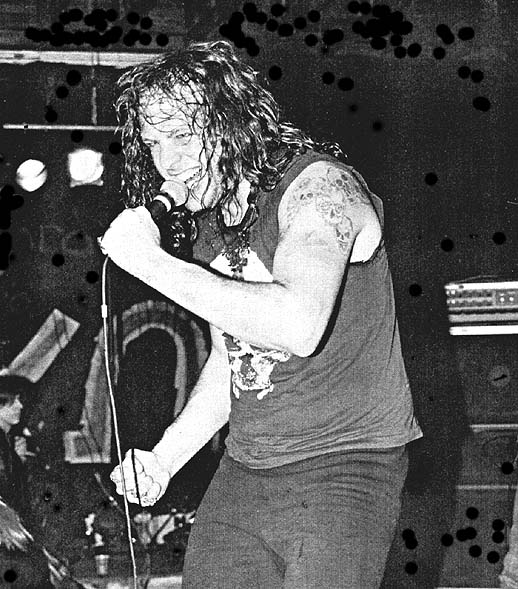
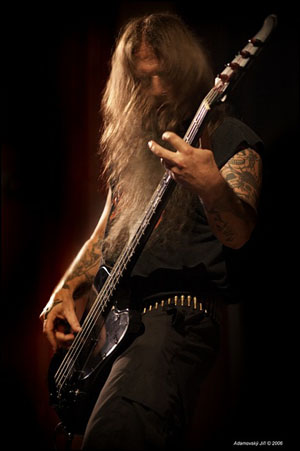
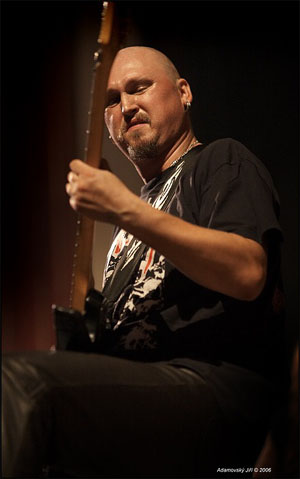
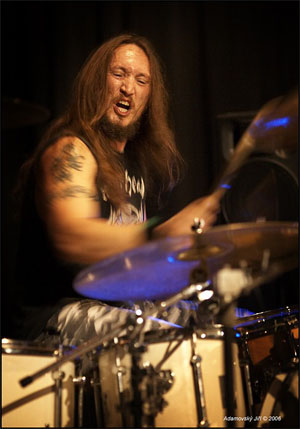
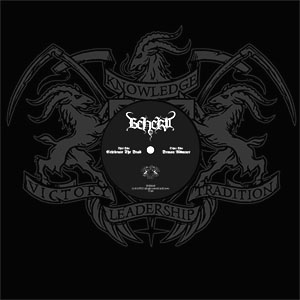 After a new genre establishes itself, bands try to stand out by either mixing other genres into their music or to expand upon the original idea, increasing its complexity and depth.
After a new genre establishes itself, bands try to stand out by either mixing other genres into their music or to expand upon the original idea, increasing its complexity and depth.
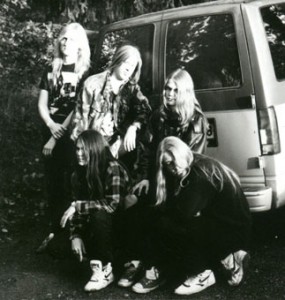 Midsummer’s sylvan possession will claim many lives tonight by drowning, stabbing, hanging and other morbid rituals that cloud the light of the greatest Finnish celebration. It can be said that the spiritual conflict between the barrenness of the Finnish urban life and the sudden plunge into the freshness of nature undertaken by most at this time of the year, combined with the gargantuan intake of alcohol, causes a temporary collapse of the veil of the civilization, when festivals end as festivals must. Under the deceptive tolerance of the society, dark depths boil and murderous impulses become sublimated thoughts. Some of these undercurrents were illuminated and analyzed almost as topics of transcendental philosophy in the dark contemplative statements of Finnish Death Metal, one of the strongest musical movements that ever arose from Finnish soil and also unarguably one of the strongest Death Metal scenes of the period. It is a testament to creativity that it’s still very hard to pin down a certain easily recognizable ‘Finnish sound’, but this does not mean a lack of mental images connecting them.
Midsummer’s sylvan possession will claim many lives tonight by drowning, stabbing, hanging and other morbid rituals that cloud the light of the greatest Finnish celebration. It can be said that the spiritual conflict between the barrenness of the Finnish urban life and the sudden plunge into the freshness of nature undertaken by most at this time of the year, combined with the gargantuan intake of alcohol, causes a temporary collapse of the veil of the civilization, when festivals end as festivals must. Under the deceptive tolerance of the society, dark depths boil and murderous impulses become sublimated thoughts. Some of these undercurrents were illuminated and analyzed almost as topics of transcendental philosophy in the dark contemplative statements of Finnish Death Metal, one of the strongest musical movements that ever arose from Finnish soil and also unarguably one of the strongest Death Metal scenes of the period. It is a testament to creativity that it’s still very hard to pin down a certain easily recognizable ‘Finnish sound’, but this does not mean a lack of mental images connecting them.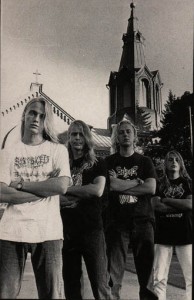
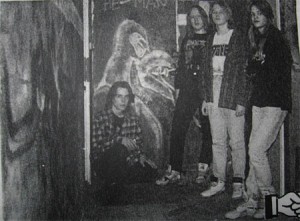 Visitors remembers the Western shores of Finland mostly from their warm summer days, windstorms and chilly nights of Autumn. The dunes of the shore of Yyteriare unique in the whole Scandinavian region while most of the towns carry relics of past industries but have failed to establish themselves in modern or digital age, remaining secluded communities with little vital attractions to the youngsters. Thus it is not surprising that towns such as the historic
Visitors remembers the Western shores of Finland mostly from their warm summer days, windstorms and chilly nights of Autumn. The dunes of the shore of Yyteriare unique in the whole Scandinavian region while most of the towns carry relics of past industries but have failed to establish themselves in modern or digital age, remaining secluded communities with little vital attractions to the youngsters. Thus it is not surprising that towns such as the historic 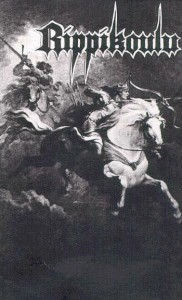 What force in the inner core of man gives birth to
What force in the inner core of man gives birth to 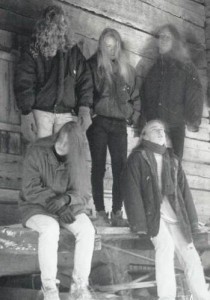 Valkeakoski
Valkeakoski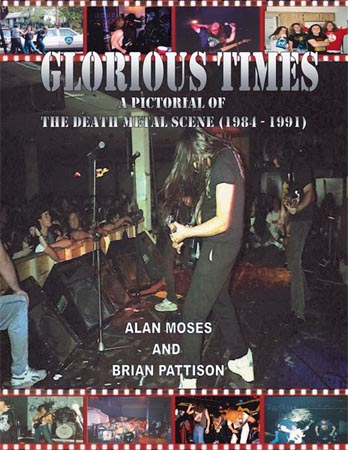
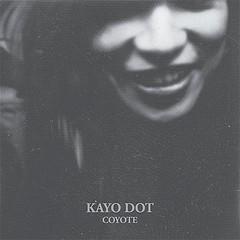
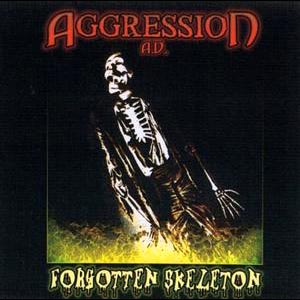

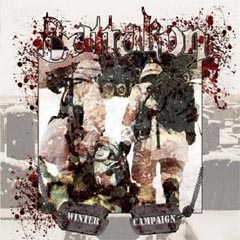
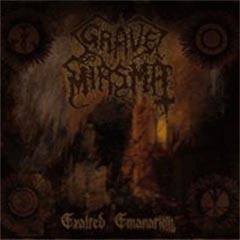
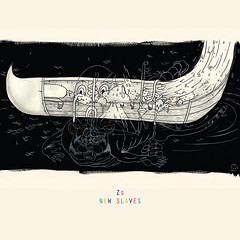
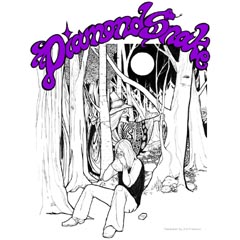
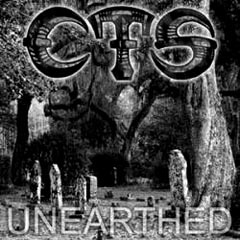

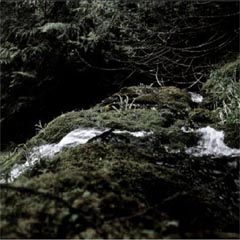
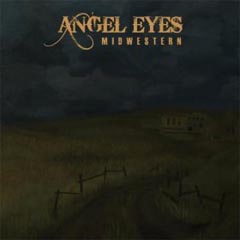
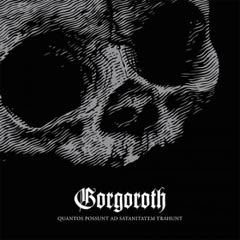
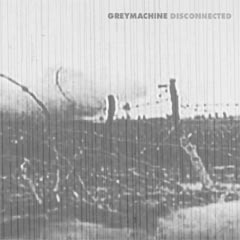
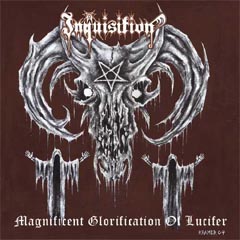
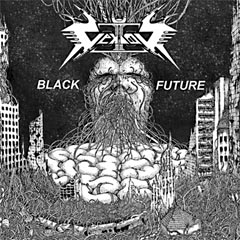
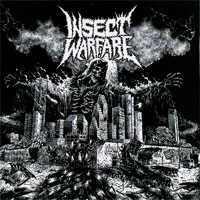
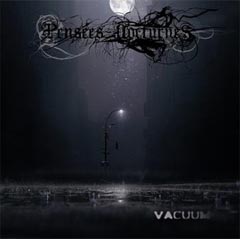
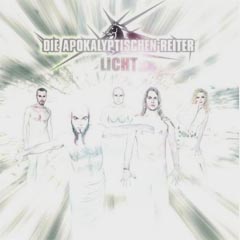
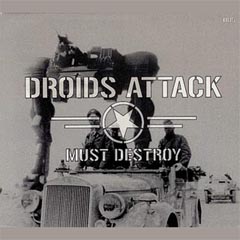
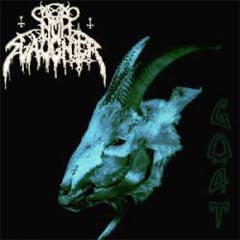
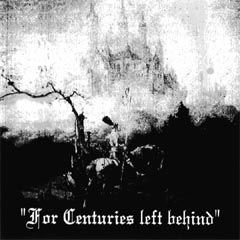
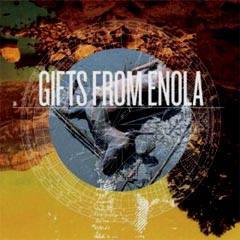
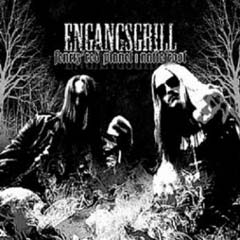 We’re going to talk about the first band here, Fenriz’ Red Planet, because Nattefrost is forgettable 1970s punk rock dressed up as early 1980s black metal. This band is a hybrid between doom metal, 1970s heavy guitar jam, and what they call stoner doom now but was recognizable in St. Vitus, Pentagram and Sleep for many years. The production approach and song style is closest to 1970s heavy guitar rock, like Cream or even Led Zeppelin, in that songs are verse/chorus works with a big fat diversion stuck in the middle that may run through a couple of riffs but comes back into key and rhythm so the cycle can spin again. But over half of the riffs are straight out of old school 1980s doom metal, and that would be St. Vitus and Pentagram but also late-blooming NWOBHM with a doom edge like Witchfinder General and Budgie. It’s not exciting; if anything, it sounds like a demo where the band hasn’t yet finalized direction and aesthetic. However, it is good; these songs have character and a spirit to them which you cannot get anywhere else. You can hear a few lifts from Fenriz’ folk/metal project Storm and one or two similar themes to Darkthrone, but this CD doesn’t need to namedrop to stand on its own. They named it “Engangsgrill,” which apparently is a type of disposable barbecue, which fits exactly the kind of sloppy rock/metal hybrid you have here: pickup trucks headed to the country with a keg, a bong and some friends, followed by a weekend of the best neighborhood bands jamming, society gets forgotten until on Monday morning you drive back with a mouth full of ash and the kind of diluted hangover that comes from cheap beer in constant consumption.
We’re going to talk about the first band here, Fenriz’ Red Planet, because Nattefrost is forgettable 1970s punk rock dressed up as early 1980s black metal. This band is a hybrid between doom metal, 1970s heavy guitar jam, and what they call stoner doom now but was recognizable in St. Vitus, Pentagram and Sleep for many years. The production approach and song style is closest to 1970s heavy guitar rock, like Cream or even Led Zeppelin, in that songs are verse/chorus works with a big fat diversion stuck in the middle that may run through a couple of riffs but comes back into key and rhythm so the cycle can spin again. But over half of the riffs are straight out of old school 1980s doom metal, and that would be St. Vitus and Pentagram but also late-blooming NWOBHM with a doom edge like Witchfinder General and Budgie. It’s not exciting; if anything, it sounds like a demo where the band hasn’t yet finalized direction and aesthetic. However, it is good; these songs have character and a spirit to them which you cannot get anywhere else. You can hear a few lifts from Fenriz’ folk/metal project Storm and one or two similar themes to Darkthrone, but this CD doesn’t need to namedrop to stand on its own. They named it “Engangsgrill,” which apparently is a type of disposable barbecue, which fits exactly the kind of sloppy rock/metal hybrid you have here: pickup trucks headed to the country with a keg, a bong and some friends, followed by a weekend of the best neighborhood bands jamming, society gets forgotten until on Monday morning you drive back with a mouth full of ash and the kind of diluted hangover that comes from cheap beer in constant consumption.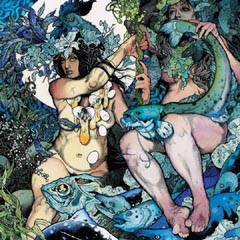 Oh neat, an emo/stoner metal hybrid with lots of indie and punk rock touches. If you can imagine Neurosis and Jawbreaker making sweet love with newer Sleep, and throwing in tons of stuff from the heavy metal and indie rock canons, you’ll have a good image of what this cheeseball release has to offer. From the way the labels and the big industry reviewers — who have about five minutes to hear each CD, and put them on in the background while socializing for two weeks, then forget about them — went on about this CD, you’d think it was the second coming of innovation itself. Instead, it’s stale and completely loses what’s good about metal and punk, converging on a mean that’s closer to your run-of-the-mill hipster band. This is awful.
Oh neat, an emo/stoner metal hybrid with lots of indie and punk rock touches. If you can imagine Neurosis and Jawbreaker making sweet love with newer Sleep, and throwing in tons of stuff from the heavy metal and indie rock canons, you’ll have a good image of what this cheeseball release has to offer. From the way the labels and the big industry reviewers — who have about five minutes to hear each CD, and put them on in the background while socializing for two weeks, then forget about them — went on about this CD, you’d think it was the second coming of innovation itself. Instead, it’s stale and completely loses what’s good about metal and punk, converging on a mean that’s closer to your run-of-the-mill hipster band. This is awful.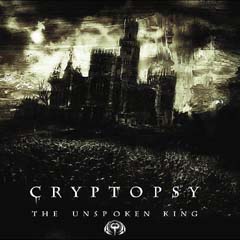 This is what’s left of the band that made None So Vile? The neatly structured, compact death metal has been replaced with blasting metalcore. Metalcore, as you may know, is kind of a garbage plate for underground metal and punk. Based around the interpretation of technical metal into punk structures that Human Remains showed us, metalcore loves randomness in circular song structures, so you get ten minimally-related riffs linked by a breakdown and a few slow chants, and then the whole thing repeats, and then the song ends. It’s music for a fragmented mind and as a result, has the IQ of a headless chicken watching daytime TV. Cryptopsy utterly fails to make coherent music out of this style as their countrymen Neuraxis eventually did, and instead defecate this collection of random riffs based around an egodramatic vocal track. It’s total garbage for morons.
This is what’s left of the band that made None So Vile? The neatly structured, compact death metal has been replaced with blasting metalcore. Metalcore, as you may know, is kind of a garbage plate for underground metal and punk. Based around the interpretation of technical metal into punk structures that Human Remains showed us, metalcore loves randomness in circular song structures, so you get ten minimally-related riffs linked by a breakdown and a few slow chants, and then the whole thing repeats, and then the song ends. It’s music for a fragmented mind and as a result, has the IQ of a headless chicken watching daytime TV. Cryptopsy utterly fails to make coherent music out of this style as their countrymen Neuraxis eventually did, and instead defecate this collection of random riffs based around an egodramatic vocal track. It’s total garbage for morons.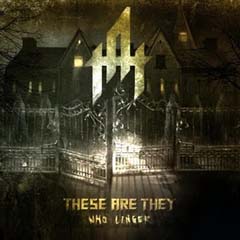 Imagine Iron Maiden doing a simplified version of 1990s Demigod or Amorphis. This CD is unique in that it successfully applies both (a) the old school death metal style and (b) a heavy metal, harmonized-guitar, bouncy riff style — and does it by coming up with a melodic phrase and answer, and using these to make layers of verse and chorus. Play riff; play notes of riff in variation of rhythm; harmonize guitars and repeat, then cycle. The choruses do the same. Nothing sounds out of place, and the deep guttural voice guides it along, but it seems entirely out of place when the heavy metal riffs and trills come into play. In addition, the riff salad of death metal isn’t here; like rock or indie, this rides one pattern for verse and one for chorus, and much variation is not to be found, which probably places this out of the range of old school death metal fans. Still, these are quality riffs and excellent use of basic harmony, which makes this easy listening and because it is not random, a great improvement on the metalcore-heavy stuff we hear daily. For albums like later Bolt Thrower, which tried to make a heavy metal/death metal hybrid, this is probably the best so far.
Imagine Iron Maiden doing a simplified version of 1990s Demigod or Amorphis. This CD is unique in that it successfully applies both (a) the old school death metal style and (b) a heavy metal, harmonized-guitar, bouncy riff style — and does it by coming up with a melodic phrase and answer, and using these to make layers of verse and chorus. Play riff; play notes of riff in variation of rhythm; harmonize guitars and repeat, then cycle. The choruses do the same. Nothing sounds out of place, and the deep guttural voice guides it along, but it seems entirely out of place when the heavy metal riffs and trills come into play. In addition, the riff salad of death metal isn’t here; like rock or indie, this rides one pattern for verse and one for chorus, and much variation is not to be found, which probably places this out of the range of old school death metal fans. Still, these are quality riffs and excellent use of basic harmony, which makes this easy listening and because it is not random, a great improvement on the metalcore-heavy stuff we hear daily. For albums like later Bolt Thrower, which tried to make a heavy metal/death metal hybrid, this is probably the best so far.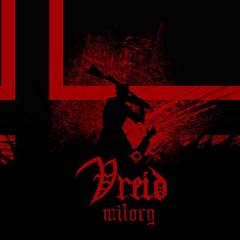 Black metal was about writing unique melodies and building song structures to fit them. Vreid is about mimicking the past with more intensity in each riff, but relying on predictable melodic strips and linear song structures in circular repetition, resulting in songs that are binary like nu-metal: a softer part, then a harder part, then a response to that which softens the hardness, then a restatement at full blast, fade out and win. Most of these riffs come from the 1970s and 1980s generations of metal and get a “black metal” treatment, so end up sounding like rock music in its Sunday black metal evil clothes. The music is driving by a chanting vocal which rides the beat like the shouts of the drummer commanding the slaves to row. Every now and then they launch into an extended melody like a pentatonic version of early ancient, and they have the raw rhythmic power of an early Marduk or Zyklon, but it doesn’t add up to more than most rock music, and considerably less than the formative works of Nordic black metal.
Black metal was about writing unique melodies and building song structures to fit them. Vreid is about mimicking the past with more intensity in each riff, but relying on predictable melodic strips and linear song structures in circular repetition, resulting in songs that are binary like nu-metal: a softer part, then a harder part, then a response to that which softens the hardness, then a restatement at full blast, fade out and win. Most of these riffs come from the 1970s and 1980s generations of metal and get a “black metal” treatment, so end up sounding like rock music in its Sunday black metal evil clothes. The music is driving by a chanting vocal which rides the beat like the shouts of the drummer commanding the slaves to row. Every now and then they launch into an extended melody like a pentatonic version of early ancient, and they have the raw rhythmic power of an early Marduk or Zyklon, but it doesn’t add up to more than most rock music, and considerably less than the formative works of Nordic black metal.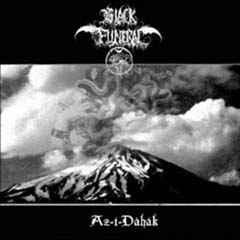 Throbbing notes rhythm a rhythm that then reverses, examines a portion of itself in detail, and then picks up in a new direction which dovetails with the old; the throb remains, like symbols etched in the air with a torch caught on the slower memory of film. In this way, Black Funeral achieves an odd ambience similar to that of Impetigo, where a higher note is strummed repetitively at an offset rhythm where most bands would hammer a lower note on the beat, but by the nature of the larger melodic structure of the riff, this throb does not bounce jauntily like a rock rhythm; it hangs, like a reminder of mortality. Vocals are chant-ish black metal rasps and the mechanistic pedaling of the drum machine fits this sound like a glove, getting further inhuman as it distances us from musical expectation and clean aesthetics. Like the humming beeps of an alien machine exploring the night, this album rediscovers humanity by removing it from the picture and showing us the empty space in which we must construct as inevitable death closes in. While most experts agree “Vampyr” is the height of this band — and who am I to disagree? — this perhaps less proficient album is more haunting and bizarre, yet fits it into a pattern similar to our reminiscences of isolated nights when the future angled away from us like the shadow of an unknown doorway.
Throbbing notes rhythm a rhythm that then reverses, examines a portion of itself in detail, and then picks up in a new direction which dovetails with the old; the throb remains, like symbols etched in the air with a torch caught on the slower memory of film. In this way, Black Funeral achieves an odd ambience similar to that of Impetigo, where a higher note is strummed repetitively at an offset rhythm where most bands would hammer a lower note on the beat, but by the nature of the larger melodic structure of the riff, this throb does not bounce jauntily like a rock rhythm; it hangs, like a reminder of mortality. Vocals are chant-ish black metal rasps and the mechanistic pedaling of the drum machine fits this sound like a glove, getting further inhuman as it distances us from musical expectation and clean aesthetics. Like the humming beeps of an alien machine exploring the night, this album rediscovers humanity by removing it from the picture and showing us the empty space in which we must construct as inevitable death closes in. While most experts agree “Vampyr” is the height of this band — and who am I to disagree? — this perhaps less proficient album is more haunting and bizarre, yet fits it into a pattern similar to our reminiscences of isolated nights when the future angled away from us like the shadow of an unknown doorway.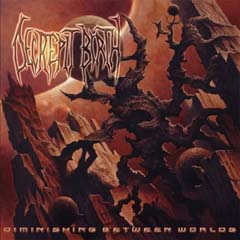 If the recombinant album name and band name didn’t clue you in, here’s the skinny: this band is totally postmodern, meaning that they fit together all sorts of random influences and then link them together with the basics of rhythm and harmony. As a result, it’s like a fast ride at Disneyland: constant changing stimulus of radical difference so much that after a while you lose any idea of where you are, and end up thinking you’ve come very far, when at the very end as the buggy slows you realize you’ve been circling around the same relatively small space. Unlike most bands of this type, which I’m going to call crypto-metalcore because it’s (a) without death metal’s style of organization, preferring instead the hardcore method of having riffs have as little in common as possible and no narrative (b) of mixed riff styles and (c) depends on rhythmic buildup/breakdown for tension because you’re not going to get it in contrast between riffs, Decrepit Birth is good — it’s like an Iron Maiden album hidden in Deeds of Flesh with Blotted Science and Negativa offering critique. However, I can’t listen to this carnival music; it breaks down concentration and replaces it with elaborate versions of territory trod long ago.
If the recombinant album name and band name didn’t clue you in, here’s the skinny: this band is totally postmodern, meaning that they fit together all sorts of random influences and then link them together with the basics of rhythm and harmony. As a result, it’s like a fast ride at Disneyland: constant changing stimulus of radical difference so much that after a while you lose any idea of where you are, and end up thinking you’ve come very far, when at the very end as the buggy slows you realize you’ve been circling around the same relatively small space. Unlike most bands of this type, which I’m going to call crypto-metalcore because it’s (a) without death metal’s style of organization, preferring instead the hardcore method of having riffs have as little in common as possible and no narrative (b) of mixed riff styles and (c) depends on rhythmic buildup/breakdown for tension because you’re not going to get it in contrast between riffs, Decrepit Birth is good — it’s like an Iron Maiden album hidden in Deeds of Flesh with Blotted Science and Negativa offering critique. However, I can’t listen to this carnival music; it breaks down concentration and replaces it with elaborate versions of territory trod long ago.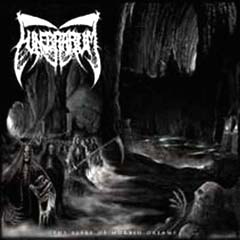 What happened here? Eight years ago — before old-school “revival” was even a blip on the radar — this band had the apparent potential to give proper life to archaic death metal form. Their first album/demo was a brooding, infectious and grimly cohesive piece of work, enough so to make this sound almost brazenly cheap by comparison. Toss in every imaginable death metal riff style coined between 1989 and 1993, lay them out on a rhythmic smorgasbord and put them through enough mood changes to make a pregnant teenager blush and you’ve come damn close to this; add enough embarassing Bloodbath-sounding material (listen to the opener) to something otherwise “authentic” and you’ll never want to hear “old school” again. – kontinual
What happened here? Eight years ago — before old-school “revival” was even a blip on the radar — this band had the apparent potential to give proper life to archaic death metal form. Their first album/demo was a brooding, infectious and grimly cohesive piece of work, enough so to make this sound almost brazenly cheap by comparison. Toss in every imaginable death metal riff style coined between 1989 and 1993, lay them out on a rhythmic smorgasbord and put them through enough mood changes to make a pregnant teenager blush and you’ve come damn close to this; add enough embarassing Bloodbath-sounding material (listen to the opener) to something otherwise “authentic” and you’ll never want to hear “old school” again. – kontinual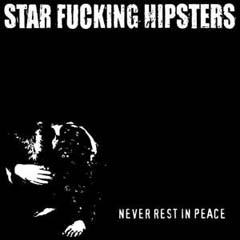 There are some of us who believe that rock and roll music, instead of being a thing deliberately created, is an aggregate of what was left over when we tested everything else against a captive audience. Star Fucking Hipsters prove this by carefully absorbing everything they can into the great sponge of melancholy indie pop. These songs usually start off with fast punk or speed metal (Slayer) riffs, and then pass through a few exciting transitions borrowed from anything industrial, black and reggage or between, but then we get to the core: darkish, self-pitying, somewhat helpless indie pop. True, it’s in pop punk format like The Descendents meets Blink 182 with Jane’s Addiction advising on behalf of the emo CIA, but basically, it’s pop. And when we get to that point we see this album is like a confused and lonely person in the city, covering themselves with newspapers or whatever fashions they can yank out of the wind, hoping no one will ever get a glimpse inside. If that’s its goal, this is supreme art, but more likely it is the emoting of such people hoping we’ll justify their existence for them. As pop, it’s not bad, a little toward the “poignant” side of minor key melodies sliding into major key to give you a sense of hope. But it’s really the same old thing, or the latest incarnation of it in whatever styles have stuck over the past twelve years, and so I can’t imagine why you’d listen to this instead of any of the 100,000 other albums this “good” in the rock style.
There are some of us who believe that rock and roll music, instead of being a thing deliberately created, is an aggregate of what was left over when we tested everything else against a captive audience. Star Fucking Hipsters prove this by carefully absorbing everything they can into the great sponge of melancholy indie pop. These songs usually start off with fast punk or speed metal (Slayer) riffs, and then pass through a few exciting transitions borrowed from anything industrial, black and reggage or between, but then we get to the core: darkish, self-pitying, somewhat helpless indie pop. True, it’s in pop punk format like The Descendents meets Blink 182 with Jane’s Addiction advising on behalf of the emo CIA, but basically, it’s pop. And when we get to that point we see this album is like a confused and lonely person in the city, covering themselves with newspapers or whatever fashions they can yank out of the wind, hoping no one will ever get a glimpse inside. If that’s its goal, this is supreme art, but more likely it is the emoting of such people hoping we’ll justify their existence for them. As pop, it’s not bad, a little toward the “poignant” side of minor key melodies sliding into major key to give you a sense of hope. But it’s really the same old thing, or the latest incarnation of it in whatever styles have stuck over the past twelve years, and so I can’t imagine why you’d listen to this instead of any of the 100,000 other albums this “good” in the rock style.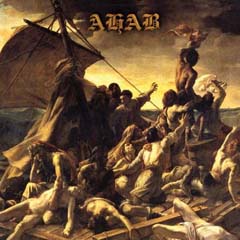 Funeral doom of a style similar to Skepticism if merged with Esoteric, with a tiny bit of Paradise Lost or Sleep in the wings, Ahab is a studied take on the slow and depressive atmospheric music that many people seem to enjoy. Stylistically, it is probably the most advanced of its kind; musically, it is perfectly competent; artistically, it is not particularly compelling. Its melodies have less of a sense of mixed emotions than do those of Skepticism, and its songs develop in predictable cycles within cycles, leaving us with atmosphere by default once all else has been blocked out. Like American rock bands, Ahab also has to throw in that sense of “contrast” where any dominant idea gets a contrarian voice thrown up against it, where bands like Skepticism bear down with enhancement and variation inside their major ideas. Few want to be the voice to stand up and say this, but most doom metal is boring, and not just because it’s slow. Ahab, while better than most, falls under this umbrella.
Funeral doom of a style similar to Skepticism if merged with Esoteric, with a tiny bit of Paradise Lost or Sleep in the wings, Ahab is a studied take on the slow and depressive atmospheric music that many people seem to enjoy. Stylistically, it is probably the most advanced of its kind; musically, it is perfectly competent; artistically, it is not particularly compelling. Its melodies have less of a sense of mixed emotions than do those of Skepticism, and its songs develop in predictable cycles within cycles, leaving us with atmosphere by default once all else has been blocked out. Like American rock bands, Ahab also has to throw in that sense of “contrast” where any dominant idea gets a contrarian voice thrown up against it, where bands like Skepticism bear down with enhancement and variation inside their major ideas. Few want to be the voice to stand up and say this, but most doom metal is boring, and not just because it’s slow. Ahab, while better than most, falls under this umbrella.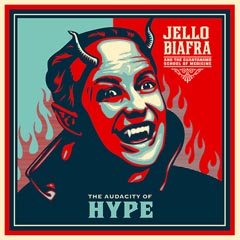 Purists will kill me for this, but this is Biafra’s best work — it’s musical. Where the Dead Kennedys sounded disorganized and messy without really building on that as an aesthetic, he’s slowed down to a pop-punk combo that uses hardcore riffs (Discharge, Exploited) to balance its melodic lead picking (Circle Jerks, The Plugz). That, plus Southern Fried guitar solos and lead guitar noise, forms the underpinning for a more interesting Biafra performance than has ever been heard before. On this CD, Biafra develops his vocal lines both melodically and in timbre, giving the performance of his life with verve and energy. You’ve heard these riff types before, and many of the note progressions are “pop culture” stalwarts that show up in movie soundtracks and commercials, but here Biafra and his band develop each into a song that’s half-rock and half-hardcore, creating a foundation that will introduce a new generation to the sounds of hardcore punk.
Purists will kill me for this, but this is Biafra’s best work — it’s musical. Where the Dead Kennedys sounded disorganized and messy without really building on that as an aesthetic, he’s slowed down to a pop-punk combo that uses hardcore riffs (Discharge, Exploited) to balance its melodic lead picking (Circle Jerks, The Plugz). That, plus Southern Fried guitar solos and lead guitar noise, forms the underpinning for a more interesting Biafra performance than has ever been heard before. On this CD, Biafra develops his vocal lines both melodically and in timbre, giving the performance of his life with verve and energy. You’ve heard these riff types before, and many of the note progressions are “pop culture” stalwarts that show up in movie soundtracks and commercials, but here Biafra and his band develop each into a song that’s half-rock and half-hardcore, creating a foundation that will introduce a new generation to the sounds of hardcore punk.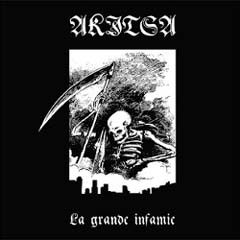 Most of us love the idea of black metal: a few totally socially alienated people, armed only with the truth, pick up guitars one weekend and make a simple mind-virus that helps slay all of the vastly powerful illusions that make our modern world miserable. The problem is that this is far from the truth: most of the people who have made great simple black metal were expert players or at least savants who self-schooled themselves in a unique and powerful style, and their work is very deliberate and designed to make us enjoy life as much as convey some idea. But as in all things, each generation picks up where the previous generation appeared to leave off, so the source of the idea is always lost. Akitsa sounds like a cross between The Exploited and early Dark Funeral, with simple melodic riffs offset against sawing basic power chording; the melodic riffs are too candy-sweet and the power chord riffs are too much of a style we can get anywhere. “Silence” appears to be heavily influenced by “Thy Winter Kingdom” from the first Behemoth CD. The rest of the CD is alternating Burzum influences with later model droning melody. It is both not bad and not really compelling enough to want to hear again.
Most of us love the idea of black metal: a few totally socially alienated people, armed only with the truth, pick up guitars one weekend and make a simple mind-virus that helps slay all of the vastly powerful illusions that make our modern world miserable. The problem is that this is far from the truth: most of the people who have made great simple black metal were expert players or at least savants who self-schooled themselves in a unique and powerful style, and their work is very deliberate and designed to make us enjoy life as much as convey some idea. But as in all things, each generation picks up where the previous generation appeared to leave off, so the source of the idea is always lost. Akitsa sounds like a cross between The Exploited and early Dark Funeral, with simple melodic riffs offset against sawing basic power chording; the melodic riffs are too candy-sweet and the power chord riffs are too much of a style we can get anywhere. “Silence” appears to be heavily influenced by “Thy Winter Kingdom” from the first Behemoth CD. The rest of the CD is alternating Burzum influences with later model droning melody. It is both not bad and not really compelling enough to want to hear again.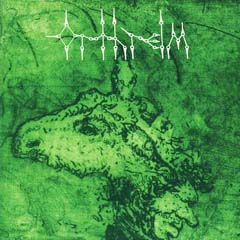 I wish this album were a joke, but like most modern and postmodern art, it’s an attempt to “demonstrate” an “idea,” and that idea has no correlation to the reality of an artist both entertaining and informing his listeners. Instead, you get a lot of fast chromatic playing over serial drumming with occasional breaks into jazz-style breakdowns that are either sloppy or misinformed about music theory. The result is a dissonant atmosphere after the band lulls you into contentment with repetition. Over time, the basic pattern increases in a period-doubling format, creating a linear expansion on a basic idea that resembles holy books that write about the universe expanding from a breath, except here the expansion leads to nothing but a reflection of itself. When Burzum did this with Det Som Engang Var, it built a mood that gained resurgent power of time; here it is purely deconstructive and fragments the listener’s attention span by forcing it through a narrow slit of musical awareness. People will like this because it’s unique, and talk about how genius it is because no one else “dared to be different” to such a degree, but as a work of meaningful art and a listening experience, it is worthless.
I wish this album were a joke, but like most modern and postmodern art, it’s an attempt to “demonstrate” an “idea,” and that idea has no correlation to the reality of an artist both entertaining and informing his listeners. Instead, you get a lot of fast chromatic playing over serial drumming with occasional breaks into jazz-style breakdowns that are either sloppy or misinformed about music theory. The result is a dissonant atmosphere after the band lulls you into contentment with repetition. Over time, the basic pattern increases in a period-doubling format, creating a linear expansion on a basic idea that resembles holy books that write about the universe expanding from a breath, except here the expansion leads to nothing but a reflection of itself. When Burzum did this with Det Som Engang Var, it built a mood that gained resurgent power of time; here it is purely deconstructive and fragments the listener’s attention span by forcing it through a narrow slit of musical awareness. People will like this because it’s unique, and talk about how genius it is because no one else “dared to be different” to such a degree, but as a work of meaningful art and a listening experience, it is worthless.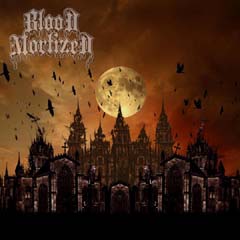 This band claims “active” status in the early nineties, with zero material to show for it. It may very well be true; current personnel have some of the more run-of-the-mill Stockholm bands to brag about in their ancestry. Excited yet? This falls somewhere between Amon Amarth and Dismember’s Massive Killing Capacity, smothered in the “soft” mimicry of the Sunlight sound that seems so common for these fence-sitting bands. The plod is painful and simple and the song development as bluntly screwball as the song titles, lending an air of crafted irony to the whole presentation lest somebody seriously stack it up against any of its predecessors. One wonders whence this stuff keeps coming — I’m wont to call this the “Swedish mid-life crisis” and leave it at that. – kontinual
This band claims “active” status in the early nineties, with zero material to show for it. It may very well be true; current personnel have some of the more run-of-the-mill Stockholm bands to brag about in their ancestry. Excited yet? This falls somewhere between Amon Amarth and Dismember’s Massive Killing Capacity, smothered in the “soft” mimicry of the Sunlight sound that seems so common for these fence-sitting bands. The plod is painful and simple and the song development as bluntly screwball as the song titles, lending an air of crafted irony to the whole presentation lest somebody seriously stack it up against any of its predecessors. One wonders whence this stuff keeps coming — I’m wont to call this the “Swedish mid-life crisis” and leave it at that. – kontinual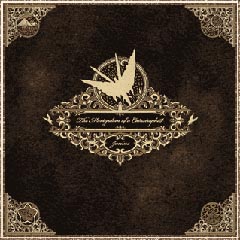 What is post-rock? For most, it’s slow atmospheric rock beats with emo, punk, indie and noise riffs slowed down to provide texture. On this CD, Junius blend in a modern taste of the ancient with a Dead Can Dance influence. The result is like a river, winding around obstacles to rejoin itself, but only suggesting a topography. This music is comforting and melancholic, but not really exciting. It is pretty, but will find it hard to escape a lukewarm rock underpinning that reigns in its tendencies to escape for the outer limits. A reasonable comparison might be if Danzig decided to do a space rock album: you can appreciate it aesthetically, but sense how the voice isn’t really there, and how as much as these guys want to be ancient, they’re stuck in a modern paradigm.
What is post-rock? For most, it’s slow atmospheric rock beats with emo, punk, indie and noise riffs slowed down to provide texture. On this CD, Junius blend in a modern taste of the ancient with a Dead Can Dance influence. The result is like a river, winding around obstacles to rejoin itself, but only suggesting a topography. This music is comforting and melancholic, but not really exciting. It is pretty, but will find it hard to escape a lukewarm rock underpinning that reigns in its tendencies to escape for the outer limits. A reasonable comparison might be if Danzig decided to do a space rock album: you can appreciate it aesthetically, but sense how the voice isn’t really there, and how as much as these guys want to be ancient, they’re stuck in a modern paradigm.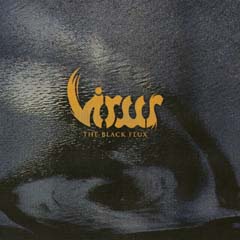 For the last time: if I wanted indie rock, I would have gone to a different part of the record store. Take your Sisters of Mercy gothic vocals, your bad indie rock open chord guitar riffs, and your basic song structures interrupted by dramatic outbursts, and put them there. I don’t want to fall into the old trap of saying “this isn’t metal,” because what I really want to say is that this is indie rock and should be integrated into that genre for the modicum of black metal stylings and ideas it still possesses. Sure, they’re going to call it a “post-rock” influence, but other than a little flexibility of rhythm, what’s going on here is the same stuff emo, indie and shoegaze bands were pumping out in the early 1990s.
For the last time: if I wanted indie rock, I would have gone to a different part of the record store. Take your Sisters of Mercy gothic vocals, your bad indie rock open chord guitar riffs, and your basic song structures interrupted by dramatic outbursts, and put them there. I don’t want to fall into the old trap of saying “this isn’t metal,” because what I really want to say is that this is indie rock and should be integrated into that genre for the modicum of black metal stylings and ideas it still possesses. Sure, they’re going to call it a “post-rock” influence, but other than a little flexibility of rhythm, what’s going on here is the same stuff emo, indie and shoegaze bands were pumping out in the early 1990s.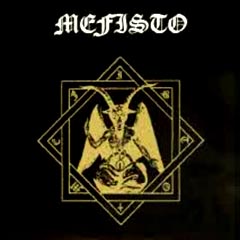 This CD resembles death metal in no way other than the vocals, which are the kind of reverbed whisper shout that made the first Sepultura EP so memorable. But the music… well, it’s stranded in the 1980s. Throw a lot of Metallica, Kreator, Slayer and Destruction in a blender — like every other band from that era — and you’ll get this mismash of riffs very similar to both the aforementioned bands and a huge heritage of heavy metal. To their credit, this band string them together well rhythmically but otherwise seem entirely random. Before someone convinces you this is a forgotten classic, ask them if classic means “good” or just that it was around in the early 1990s.
This CD resembles death metal in no way other than the vocals, which are the kind of reverbed whisper shout that made the first Sepultura EP so memorable. But the music… well, it’s stranded in the 1980s. Throw a lot of Metallica, Kreator, Slayer and Destruction in a blender — like every other band from that era — and you’ll get this mismash of riffs very similar to both the aforementioned bands and a huge heritage of heavy metal. To their credit, this band string them together well rhythmically but otherwise seem entirely random. Before someone convinces you this is a forgotten classic, ask them if classic means “good” or just that it was around in the early 1990s. We all want to love anything with the enigmatic Nocturno Culto on it. In fact, many of us were hoping he would pull off a Nemesis Divina where his skills converted an unexceptional band into a relative masterpiece. Not so on Sarke — his performance is phoned in, mainly because these songs are sparse, undeveloped, and entirely derivative of their influences in a 1989 way. In fact, the whole CD has the vibe of a collection of songs that have been kicked around since they got written in the 1980s, finally put onto vinyl years after the genre has passed them by. You’re familiar with these chord progressions and general rhythms, since many of them come out of punk rock and hard rock, and you’re probably not unacquainted — unless you’ve been under a rock labeled BLACK METAL GO HOME for the last two decades — with Culto’s interpretation of them. It’s all quite vanilla; nothing to really be appalled at here except how little you care about this flat regurgitation of the past.
We all want to love anything with the enigmatic Nocturno Culto on it. In fact, many of us were hoping he would pull off a Nemesis Divina where his skills converted an unexceptional band into a relative masterpiece. Not so on Sarke — his performance is phoned in, mainly because these songs are sparse, undeveloped, and entirely derivative of their influences in a 1989 way. In fact, the whole CD has the vibe of a collection of songs that have been kicked around since they got written in the 1980s, finally put onto vinyl years after the genre has passed them by. You’re familiar with these chord progressions and general rhythms, since many of them come out of punk rock and hard rock, and you’re probably not unacquainted — unless you’ve been under a rock labeled BLACK METAL GO HOME for the last two decades — with Culto’s interpretation of them. It’s all quite vanilla; nothing to really be appalled at here except how little you care about this flat regurgitation of the past.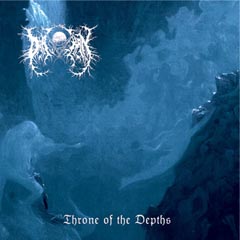 We live in a time of fools. Given no real truths to chew on, they raise themselves on lies, and make competing lies so they can be heard. Then they tell us what metal bands to listen to, and they cannot tell the difference between good music and derivative shit. They will, for example, convince themselves that Drautran is folk metal, when really it’s indie rock songs dressed up in black metal chord forms with a little extra violence. Unlike metal songs, where riffs fit together and make sense, these are rock songs with some metal riffs dropped in between the sing-song verse chorus. They take their riffing inspiration from Enslaved’s Frost but none of the compositional coherence is here. Listen to this if you want to distract yourself, fragment your concentration and dull your possibilities of ever understanding the difference between good music and crap.
We live in a time of fools. Given no real truths to chew on, they raise themselves on lies, and make competing lies so they can be heard. Then they tell us what metal bands to listen to, and they cannot tell the difference between good music and derivative shit. They will, for example, convince themselves that Drautran is folk metal, when really it’s indie rock songs dressed up in black metal chord forms with a little extra violence. Unlike metal songs, where riffs fit together and make sense, these are rock songs with some metal riffs dropped in between the sing-song verse chorus. They take their riffing inspiration from Enslaved’s Frost but none of the compositional coherence is here. Listen to this if you want to distract yourself, fragment your concentration and dull your possibilities of ever understanding the difference between good music and crap.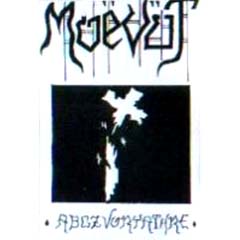 Every now and then, people who lack direction in life and so pay attention to surface features more than anything else, hoping to use these to justify their emptiness, will try to tell you how good a band is because it’s unique and nuanced. Usually this includes some kind of infantilism, like extreme minimalism or incoherence. This tedious little recording fits the bill. People like it because it’s obscure, kvlt, whatever… the truth is that it’s melodically simplistic, goes nowhere in song development, and showcases no really unique ability except to waste your time. They try to eat up as much tape as possible with intros, chants, and very basic keyboard melodies, but basically there’s nothing here. Maybe that’s the artistic point — emptiness — but then again a blank tape would have been more effective, and pleasant.
Every now and then, people who lack direction in life and so pay attention to surface features more than anything else, hoping to use these to justify their emptiness, will try to tell you how good a band is because it’s unique and nuanced. Usually this includes some kind of infantilism, like extreme minimalism or incoherence. This tedious little recording fits the bill. People like it because it’s obscure, kvlt, whatever… the truth is that it’s melodically simplistic, goes nowhere in song development, and showcases no really unique ability except to waste your time. They try to eat up as much tape as possible with intros, chants, and very basic keyboard melodies, but basically there’s nothing here. Maybe that’s the artistic point — emptiness — but then again a blank tape would have been more effective, and pleasant.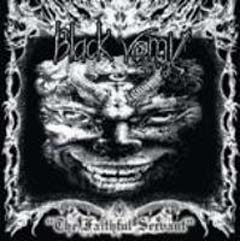 Interesting approach by this Mexican band: take a more technical version of the full speed burst style semi-melodic black metal that Sarcofago made, and intersperse it with flowing keyboard-enhanced choruses in the style of countrymen Xibalba and Avzhia. The result suffers from the radical shift between two very identifiable poles, but the music although very basic develops gently through this style, and as a result is more credible than most of what we get sent here at the Dark Legions Archive Metal Reviews and CD Recycling Center. This is a band worth keeping an eye on.
Interesting approach by this Mexican band: take a more technical version of the full speed burst style semi-melodic black metal that Sarcofago made, and intersperse it with flowing keyboard-enhanced choruses in the style of countrymen Xibalba and Avzhia. The result suffers from the radical shift between two very identifiable poles, but the music although very basic develops gently through this style, and as a result is more credible than most of what we get sent here at the Dark Legions Archive Metal Reviews and CD Recycling Center. This is a band worth keeping an eye on.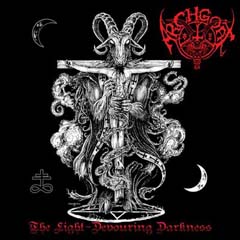 I’m convinced that a lot of contemporary death and black metal is music designed for children, because not only is it painfully simple and repetitive, but it also uses gentle rhythms of chord change — while playing at top speed. It’s like listening to a fan slowly playing an early Mozart piece. This album is similar. Sounds a lot like Blasphemy meets Impaled Nazarene, with the lower register production and slamming tempo changes of Belial. So as a retrospective of Finnish metal technique it’s great, but for anything else, it’s kind of a droning lullaby. What excuses it is that this CD shows purpose in its songwriting, and captures a mood, but for many of us the droning outweighs its significance.
I’m convinced that a lot of contemporary death and black metal is music designed for children, because not only is it painfully simple and repetitive, but it also uses gentle rhythms of chord change — while playing at top speed. It’s like listening to a fan slowly playing an early Mozart piece. This album is similar. Sounds a lot like Blasphemy meets Impaled Nazarene, with the lower register production and slamming tempo changes of Belial. So as a retrospective of Finnish metal technique it’s great, but for anything else, it’s kind of a droning lullaby. What excuses it is that this CD shows purpose in its songwriting, and captures a mood, but for many of us the droning outweighs its significance.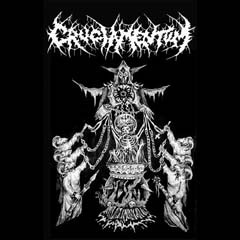 During the past two years, underground black metal shifted from emulating the early 1990s — fast melody — to emulating the late 1990s, specifically Demoncy’s “Joined in Darkness.” The Convocation EP does its best to revive that sound, with an injection of Finnish death metal and possibly American doom/death like Incantation, Winter and Infester. Although it keeps its goals limited, which is appropriate for a demo, this release shows promise in songwriting in that (a) every piece works together (b) together they create a vision of some idea, experience or emotion we can recognize from life itself and (c) while a good deal of it covers known death metal archetypes, it does so without borrowing straight from one source and so gives us a sense of exploring these ideas from a new angle. Low rasp voices, downtuned rigid guitars, and drumming that sounds like it’s straight out of drone/hardcore punk fusion gives this CD a sense of growing out of the past toward something even more ancient.
During the past two years, underground black metal shifted from emulating the early 1990s — fast melody — to emulating the late 1990s, specifically Demoncy’s “Joined in Darkness.” The Convocation EP does its best to revive that sound, with an injection of Finnish death metal and possibly American doom/death like Incantation, Winter and Infester. Although it keeps its goals limited, which is appropriate for a demo, this release shows promise in songwriting in that (a) every piece works together (b) together they create a vision of some idea, experience or emotion we can recognize from life itself and (c) while a good deal of it covers known death metal archetypes, it does so without borrowing straight from one source and so gives us a sense of exploring these ideas from a new angle. Low rasp voices, downtuned rigid guitars, and drumming that sounds like it’s straight out of drone/hardcore punk fusion gives this CD a sense of growing out of the past toward something even more ancient.
